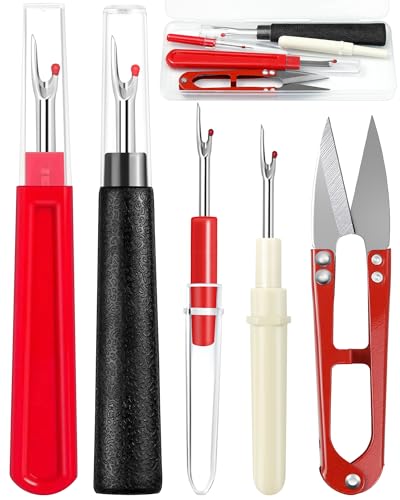Ever slipped into your favorite outfit only to find it a bit too snug? Don’t stress—you can easily make adjustments to ensure your clothes fit just right. Whether it’s a dress that’s too tight around the waist or jeans that pinch your thighs, a few simple tweaks can transform your look and comfort.
With a little time and the right tools, you’ll learn how to alter your garments without needing a professional tailor. From adding seam allowances to letting out hems, these easy steps will help you customize your wardrobe to fit your body perfectly. Let’s explore some friendly tips to help you adjust those too-tight pieces and feel fabulous every time you dress up.
Identifying The Problem Areas
Start by examining your garment closely to pinpoint tight spots. Common areas include:
- Waist: Excess tension around the waistline can restrict movement and cause discomfort.
- Sleeves: Narrow sleeves limit arm mobility and may pinch at the wrists.
- Shoulders: Tight shoulders can create pulling effects, affecting the garment’s drape.
- Hips: Restricted hip areas can impair sitting and bending motions.
- Length: Short hems may bunch up or create uneven lines.
- Neckline: A snug neckline can feel restrictive and affect overall comfort.
By identifying these specific problem areas, you can target adjustments effectively to achieve a better fit.
Tools And Materials Needed
To adjust your garment effectively, gather the following tools and materials:
- Sewing Machine: Facilitates precise stitching; essential for durable alterations.
- Needles: Select sizes appropriate for your fabric (e.g., size 10 for lightweight, size 14 for heavy fabrics).
- Thread: Choose a color matching your garment; polyester thread offers strength and flexibility.
- Scissors: Use fabric scissors for clean cuts and smaller ones for trimming threads.
- Pins and Pincushion: Secure fabric layers; straight pins work best for most adjustments.
- Measuring Tape: Ensure accurate measurements for a better fit; metal tapes provide durability.
- Seam Ripper: Remove existing stitches without damaging fabric; ideal for corrections.
- Iron and Ironing Board: Press seams and fabric for a professional finish; a steam iron enhances results.
- Patterns or Marking Tools: Transfer alteration lines accurately; tailor’s chalk or fabric markers prevent mistakes.
- Elastic or Additional Fabric: Add or adjust sections as needed; choose materials matching your garment’s texture.
Having these tools and materials on hand sets you up for successful garment adjustments, allowing you to tailor your clothes to fit comfortably and look great.
Methods For Adjusting Garments
Adjusting your garments can enhance both comfort and style. Explore these methods to customize your clothes effectively.
Letting Out Seams
Letting out seams increases the garment’s size where it’s too tight. Start by locating the seam stitches inside your garment. Use a seam ripper to carefully remove about half an inch of fabric. Press the fabric flat with an iron, then resew the seam with consistent stitches. This method works well for areas like the side seams or armholes.
Adjusting The Waistband
Adjusting the waistband improves fit around your waist. Begin by unpicking the waistband stitching at the back or side. Measure the desired increase, typically one to two inches. Insert the extra fabric evenly across the waistband. Sew the waistband back together, ensuring it aligns smoothly with the garment’s body.
Altering Sleeves And Hems
Altering sleeves and hems modifies the length and fit of these parts. For sleeves, determine the necessary length adjustment by measuring from the shoulder to the wrist. Remove the existing stitching and add fabric if loosening is needed. For hems, turn the garment inside out and measure the desired length. Trim excess fabric if shortening, then press and sew the new hem in place.
When To Seek Professional Help
- Complex Alterations: Resizing structured garments or modifying multiple sections requires expertise.
- Delicate Fabrics: Handling silk, lace, or leather demands specialized techniques to prevent damage.
- Limited Tools or Skills: Without a sewing machine or advanced skills, achieving a precise fit is challenging.
- Valuable or Vintage Items: Preserving high-value or vintage clothing benefits from professional care.
- Time Constraints: When alterations need to be done quickly, a tailor ensures timely and accurate adjustments.
Tips For Maintaining Proper Fit
- Regular Assessments
Examine your garments frequently to ensure they remain comfortable and properly fitted as your body changes.
- Proper Storage
Hang clothes on suitable hangers to maintain their shape and prevent stretching or deformation.
- Follow Care Instructions
Adhere to washing and drying guidelines on labels to avoid shrinkage and fabric damage.
- Limit Washing Frequency
Wash items only when necessary to preserve fabric integrity and extend the garment’s lifespan.

- Use Appropriate Hangers
Select hangers that support the garment’s structure, such as padded hangers for delicate fabrics or sturdy ones for heavier materials.
- Monitor Wear and Tear
Inspect garments regularly for signs of stretching or damage, addressing issues promptly to maintain fit.
- Invest in Quality Fabrics
Choose high-quality materials that retain their shape and resist stretching over time.
- Perform Minor Adjustments
Make small, incremental alterations as needed to accommodate changes in your body or preferences.
- Rotate Your Wardrobe
Rotate frequently worn items with less-used garments to reduce strain and maintain overall fit.
- Store with Care
« How to Sew Stretch Fabrics Like a Pro: 7 Insider Tips You Need Now
Unlock Your Creative Potential: How to Learn Quilting from Scratch in 7 Simple Steps »
Keep garments in a cool, dry place to prevent fabric degradation and ensure they retain their original fit.
Conclusion
Finding a too-tight garment can be frustrating but adjusting it yourself gives you control over your comfort and style. With the right tools and a bit of patience you can make your clothes fit just right. Tailoring your wardrobe not only saves you time and money but also allows you to express your personal style uniquely. Remember to assess your garments regularly and make minor tweaks as needed to keep everything looking and feeling great. Embrace the satisfaction of custom-fitting your clothes and enjoy the confidence that comes with wearing outfits perfectly tailored to you.

















